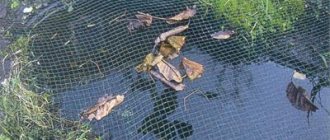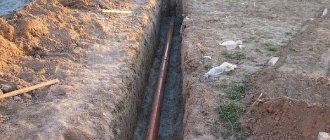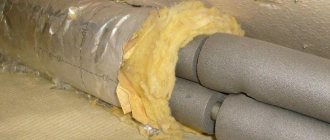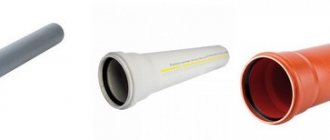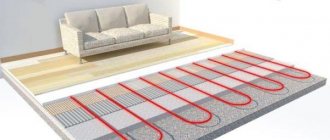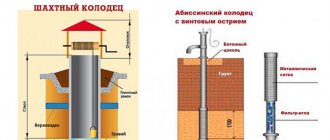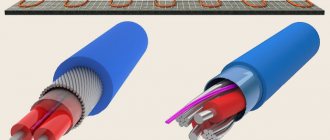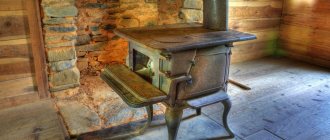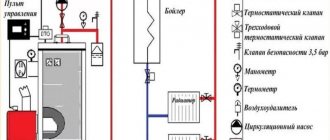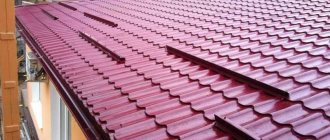Plumbing has become an integral part of a modern country house, along with heating and sewerage.
At the same time, metal products are gradually disappearing calmly and with dignity, giving way to plastic. Thanks to the simplicity and manufacturability of execution, do-it-yourself installation of polypropylene pipes for water supply is becoming the norm today.
The decision to use plastic products is dictated by time; such networks are more durable, they are environmentally friendly, and also have a number of other advantages. But which products are better to choose for water supply - polypropylene or metal-plastic, we will analyze in this article.
Polypropylene or metal-plastic - which is better for water supply?
When choosing materials for water supply, we will consider the advantages and disadvantages of this product when used for its intended purpose. To determine which is better for plumbing - polypropylene or metal-plastic, you need to consider the technical characteristics and properties of the materials.
Watch the video
Based on this, it will be possible to reasonably decide what is better to choose.
Metal-plastic
When planning to use this type of product, the following circumstances should be taken into account:
- The inner surface of metal-plastic pipes is made of food-grade cross-linked polyethylene, which allows drinking water to be transferred through them.
- The next layer consists of an adhesive composition that strengthens the structure.
- Aluminum foil serves as both a reinforcing and sealing layer, since its edges are laser welded during installation. This also represents oxygen protection for the fluid being transferred.
- Next comes another strengthening adhesive layer.
- The outer surface is protected by a thick layer of polyethylene.
Thanks to this device, the product becomes very durable, while remaining flexible enough to allow the formation of marked networks of any degree of complexity. The service life of such a system is declared by the manufacturer to be at least 50 years. At the same time, it is important to purchase high-quality products from a well-known manufacturer, confirmed by quality certificates.
At the same time, metal-plastic products have some disadvantages, expressed by the following circumstances:
- the temperature limit is no more than 75 degrees, which narrows the scope of their application;
- the maximum pressure of the water supply network should not exceed 10 atmospheres, otherwise depressurization of the pipeline may occur;
- the main disadvantage of metal-plastic water pipelines is the widespread use of threaded connections during installation; the main disadvantage is the need for regular maintenance of the system to detect and eliminate leaks;
- It is not recommended to hide such wiring inside the wall, so as not to have to open the surface in search of a possible leak;
- the need to use sealing materials during the installation of networks.
ADVICE! Metal-plastic products should not be used to make nets hidden inside walls. If a leak forms on a threaded connection, the wall surface will need to be dismantled.
Polypropylene pipes
But still, we should recognize the higher popularity of polypropylene products. The reason for this can be considered the following circumstances:
- In water supply networks, the materials do not emit harmful substances.
- The operating temperature of the transported liquid can be up to 95 degrees with the possibility of a short-term increase to 110. Therefore, polypropylene pipes for hot water supply and heating are more reliable than metal-plastic ones.
The diameters of polypropylene pipes for water supply allow you to create networks with sizes ranging from 16 to 110 millimeters. That is, they can be laid on both external and internal structures. The homologous range of sizes is represented by the following indicators: 10 – 16 – 20 – 25 – 32 – 40 – 50 – 63 – 75 – 90 – 110 millimeters. The standard length is 6 meters.
- The maximum pressure of a polypropylene water supply can be up to 20 atmospheres.
- With high-quality installation, there are no liquid leaks or depressurization of the network.
- Resistance to low temperatures, allowing use when installing open-type external water supply systems. The elasticity of the material compensates for changes in volume even when water freezes.
But the main advantage of products made from such material is their significantly lower price compared to other types of products.
The disadvantages of polypropylene pipes include the fact that the material softens at a temperature of +140 degrees, and when it reaches +170, the product simply floats. When heated, they can significantly elongate and sag.
The quality of the source material is important for polypropylene. The durability and reliability of products depends on this indicator. Unfortunately, it is impossible to control the quality in domestic conditions.
Watch the video
What is better, polypropylene or metal-plastic for plumbing is up to the user of these systems to decide. And the choice depends on many factors, which are given above, but to briefly summarize, polypropylene is ideal for hot water supply, and metal-plastic pipes are ideal for cold water supply.
Basic requirements for hidden communications
Construction codes and regulations, which include the normative document SNiP 2.04.01-85, regulate the rules for the location of water pipes in the walls - it is useful to know them when carrying out installation work. The documentary acts indicate the following basic standards for the installation of water lines in the walls:
- It is prohibited to chip load-bearing walls, as this reduces their strength and, accordingly, leads to a decrease in the stability of the entire structure.
- Only solid structures connected by soldering or welding are allowed to be laid in walls. If the connection is removable, access to it is provided by installing inspection hatches or removable panels.
- When laying a pipeline from metal-plastic or metal elements, the placement of electrical wiring should be taken into account; during gating, the electrical line at the work site must be de-energized.
- The groove must be laid taking into account the expansion of the pipeline material when heated; its depth and width are calculated to maximize the increase in the diameter of the passing pipes. It is recommended to install a compensating junction for every 3 linear meters of pipes carrying hot water.
Rice. 2 Example of performing gating with a hammer drill
- The pipes are secured using clamps; during installation, the pipeline should not come into contact with the walls of the channel - this contributes to the appearance of extraneous sounds during operation.
- It is recommended that the hot water supply pipeline placed inside the walls be placed in a heat insulator (Energoflex) to reduce heat loss in the line.
- When sealing the grooves, the material should not be heavily compacted; it is advisable to leave air cavities in the event of linear expansion of the pipes.
How to choose polypropylene pipes
Plastic pipes are produced in compliance with the requirements of GOST 52145-2003 for polypropylene pipes for water supply. Its requirements are used to guide the production of products from other plastics.
Watch the video
Standards for additional elements for polypropylene pipelines are also regulated here. If you intend to build a polypropylene water supply system with your own hands, you need to study the requirements of this standard in order to properly purchase everything you need, as well as correctly assemble it into the network.
Contents of the label
The first thing you need to pay attention to when selecting polypropylene for water supply is its labeling. It consists of several symbols. One of them informs about the material of manufacture, and, consequently, about its properties:
- Pipes for the production of which homopolypropylene is used, which has increased strength. It corresponds to the designation RRN. The main application is for cold water pipelines, as well as ventilation systems.
- Another marking is RRV. Such polypropylene pipes are suitable for installing heated floors, as well as for the purposes provided for in the previous paragraph.
- The most common is the third type. The material for it is a random copolymer of polypropylene, which ensures the use of products made from such material in heating systems, hot and cold water supply.
- A special type, which allows them to be used at temperatures of about 95 degrees, is designated PPs.
Which polypropylene pipes for water supply are best to choose depends on the specific object, the design of the system, as well as the preferences of the developer.
Watch the video
Polypropylene pipes and fittings: types, markings, installation
Color solutions
This is the factor that first of all attracts attention. Polypropylene pipes are available in white, grey, green or black. However, he says virtually nothing. The only difference is the black color - this indicates its resistance to harsh ultraviolet radiation.
In addition to the indicated designations, the labeling contains information about the product manufacturer, size, reference to the ORD (GOST or TU), as well as the class of operating conditions of the product.
Installation requirements
When laying pipes in the wall, it is recommended to use shock-absorbing materials. For example, energyflex, polyurethane foam. These materials will serve as a gap between the wall and the pipe; accordingly, there will be no pressure on the concrete when the pipe expands.
The fewer connections, the better. Connections are the most vulnerable part of polypropylene systems, least protected from leaks and having low pressure resistance.
Pipes must be selected in accordance with the conditions of further operation.
Based on wall thickness, all PPR pipes are divided into categories from PN10 to PN25.
- PN10 pipes are thin-walled, designed for cold water supply or for heated floors and other low-temperature, low-pressure systems.
- PN16 and PN20 are used for water supply with pressure up to 1.5 MPa and heating systems with pressure not exceeding 0.8 MPa.
- PN25 is reinforced with a layer of fiberglass or aluminum, which increases strength and temperature range. Accordingly, the products can be used in central heating systems at pressures up to 1.5 MPa, and in cold water supply up to 2.5 MPa.
Wiring diagrams for polypropylene water pipes in an apartment
The task of creating an apartment water supply seems simple only at first glance. The water supply wiring diagram in the apartment should provide for the delivery of liquid from the central riser to each console. In a simplified version, this is a kitchen sink, washbasin, bathtub or toilet.
But in practice, a slightly different picture is observed. Additional water intake points appear, such as washing machines and dishwashers (see how to connect to the water supply and sewerage system with your own hands), bidets, circular showers, as well as other additional plumbing consumers. Therefore, there may be a problem with simultaneous delivery of water to many points.
Watch the video - wiring with tees or manifold
Several schemes for distribution of tap water are used with a complicated system of its consumption.
Tee circuit
This distribution consists of a central pipe, from which branches are installed to each console using tees. This is the simplest method of distributing liquid within the system, but has a number of disadvantages.
One of them is the drop in water pressure from one tap to another. Thus, only residual liquid from the system, which may be missing, reaches the end of the network. In addition, if it is necessary to repair or service any console, you have to turn off the entire water supply system, starting from the riser.
The only advantage of this scheme is the economical consumption of materials, as well as ease of installation.
Collector circuit
A feature of this water distribution scheme is the supply of the entire volume of liquid to a distribution device called a collector.
It consists of a metal casing from which there are outlets for several individual points of consumption. Their number can be two to ten. Each outlet is equipped with a ball valve, which allows you to turn off the water at the desired console.
With this connection scheme it is possible to install additional equipment. Thus, additional biological and chemical purification filters, ozonizers, and other devices can be installed on the kitchen supply. Disconnected from the main flow, they will purify only water used for drinking and cooking.
During repairs, you can turn off the water only at the required water point without stopping the operation of the entire water supply.
To install a collector system, you will need a significantly larger number of pipes, but the costs will allow you to use the water supply with the greatest convenience.
Watch the video
After drawing up a diagram of the collector water supply system, it needs to be chalked onto the places where polypropylene pipes will be laid in specific sizes. It is better to entrust particularly complex wiring diagrams to an experienced designer to avoid mistakes.
Homemade wall chaser
A professional wall chaser is an expensive tool, and in terms of its operating principle and design it is practically no different from an angle grinder. This allows craftsmen to make some changes to the design of the angle grinder elements to effectively perform the gating functions.
Two disks. Installing two discs allows you to speed up work and improve its quality - the channel is cut in one pass, and its width is the same along its entire length. If the groove is narrow, the alteration is quite simple - a second disk is placed on the grinder, the width of the groove is set by a washer installed between the disks. To increase the distance between the cutting wheels, you can make an attachment for an angle grinder on a lathe with a wider seat.
Fig.9 How to make furrows for water supply pipelines with a grinder without dust
Nozzle for vacuum cleaner. To combat dust, some craftsmen make a separate attachment for an angle grinder with a fitting for connecting a vacuum cleaner. To implement this improvement, soldering or welding work that is quite difficult for a non-specialist is required.
There is an easier way to deal with dust - tie a piece of water pipe to the handle of an angle grinder with masking tape and connect a vacuum cleaner to it.
Stages of installing a water supply system from polypropylene pipes with your own hands
Before starting work, it is necessary, after careful measurements, to cut the workpieces to the required length, and also prepare the fittings necessary for assembly. Installation of a water supply system involves the use of the following components:
- Couplings are used to extend straight pipes.
- Angles - used at pipeline turns to change the direction of network laying.
- Tees, crosses - for arranging branching wiring.
- Contours - used to go around obstacles at the intersection of water supply elements.
In addition to the above, you can purchase other components, such as brackets for attaching pipes to walls, intermediate taps, adapters from size to size and other necessary parts.
Connection of pipeline elements
The process of soldering pipes with connecting elements during pipeline installation is not particularly difficult, but requires precise execution of all process parameters.
Watch the video
Installation of polypropylene pipes. Cheap budget option.
First of all, you need to check the compatibility of the elements. The two parts to be joined must not fit into each other when cold. If this happens, it means the parts are defective or incorrectly selected.
Next, you need to prepare a soldering iron. To do this, heating elements are installed on it: for the fitting there is a mandrel that heats it from the inside, for the pipe there is a coupling that heats the end of the pipe from the outside. The operating temperature of the device is 260 degrees.
Before installing the pipe, you need to chamfer the front end along the outer contour of about 1 mm at an angle of 45 degrees. This will ensure smooth passage of the pipe into the fitting hole.
It is important to prevent overheating of the mating surfaces - solid, unheated material must be preserved under the molten layer. Here it is important to maintain the heating time, which will be given below.
After warming up, both parts are removed from the soldering iron and joined together with a counter movement of the hands. Within a few seconds, the material hardens, forming a strong, permanent connection.
A sign of a correct connection is a small, about 1 mm, bead inside and outside the joint. It will not interfere with the passage of water through the pipeline.
When parts overheat, a “skirt” is formed inside the joint, significantly preventing the passage of liquid. This connection is short-lived.
The method of connecting pipes end-to-end is also used, without the use of couplings. This installation method is used less frequently, since it requires rather complex equipment for trimming the joined ends, and the reliability of the joint is lower than when using fittings.
For a successful connection, the soldering iron must be firmly and securely mounted on the workbench. Its readiness for operation is determined by the color of the indicator light; if it is red, it means the device is heating up; when green lights up, it indicates that the operating temperature has been reached.
During the installation process, some of the elements are assembled into separate sections on a workbench; this is easy and convenient. But the installation of the assembled sections into the system has to be done while holding the tool suspended. It's hard to get by with an assistant here.
The cold assembly method is also used using adhesives based on strong chemical solvents of polypropylene. When it is applied to the surfaces of parts, the material softens.
In this condition, the individual parts are connected in the desired position. Since the solvent is very volatile, it quickly evaporates and reverse polymerization occurs, due to which the parts are joined. The adhesive joining method has many limitations and must be used carefully.
Our advice
Before you begin the process of soldering pipes, it is better to perform a couple of practice joints. It is easier to work with small joints by installing the welding machine directly on the table. This way you can check how correctly the pipe soldering is performed.
But attaching elements to a partially finished pipeline will be more difficult:
- Place a soldering iron nozzle on the polypropylene pipe, insert a tee into the other part, holding the welding machine suspended.
- When preparing the main water supply, it is necessary to alternate subsequent connections. In hard-to-reach areas, it is better to avoid joining work due to the difficulty of using a soldering iron.
- The material must be dry and clean, because the presence of dirt and water will reduce the quality of the joint. It is known that the material, if wet, can deform when heated.
- Purchase all products (pipes, fittings) from the same manufacturer, because the chemical composition of elements from different manufacturers may differ, which will ultimately lead to a leaky connection.
- The temperature in the room where work with polypropylene is carried out must be optimal and not lower than +5̊C.
Elements required for installation work
Do-it-yourself installation of plastic pipes may require the use of components:
- adapter;
- coupling;
- couplings with internal or external thread;
- bends at 90 and 45°;
- tee;
- crosses;
- detachable connector;
- bushings and plugs;
- clamps.
The adapter is used to make the transition between pipes of different diameters. When soldering pipe sections of the same diameter, a coupling is required, which, in the case of a threaded connection, is equipped with an internal or external thread. Pipeline turns are carried out by bends. To solder three pipes into an assembly, tees are used, and four – crosses. The tee is also equipped with a thread.
If necessary, a detachable connection can be created. Pipelines are usually sealed with bushings or plugs. Pipes are attached to walls or structures with clamps. They come in plastic and metal.
To connect pipes you will need fittings of different configurations
Based on the materials used in the production of fittings, a distinction is made between combined and monolithic samples. In combined fittings, part of the structure is made of polymer, and the other part is made of metal. They come with a fixed and movable threaded connection. Monolithic fittings consist entirely of polymer.
Starting stage: where to start?
First of all, you need to draw up a competent design of the future system. This means a schematic plan of the pipeline made to scale, on which all design features are plotted and consumers are indicated.
To do this, it is necessary to take accurate measurements, which are subsequently used to construct a drawing of the building. After it is completed, a pipeline diagram is built.
For routing water pipes, you can choose one of two options: tee or manifold
When creating a project, different options for arranging plumbing fixtures are considered and the optimal one is selected. In addition, several factors must be taken into account during the design process. The first is the type of wiring.
It can be tee or manifold. In the first case, water collection points are connected sequentially, one after another. On the one hand, this is good, since a minimum number of pipes is required and, therefore, low costs.
However, the pressure in water consuming devices will be different. The further from the beginning of the pipeline, the lower the pressure. This is extremely inconvenient, and in the case of a large number of water points, unacceptable.
Collector wiring presupposes the presence of a special distribution unit that separates water flows and directs an individual branch to each consumer.
For manifold assembly of a pipeline from PP products, you can use a ready-made distribution unit or assemble the manifold yourself using connecting parts
In this case, there is practically no pressure loss in the system; all devices operate with the same water pressure. The main disadvantage of collector wiring is the high consumption of pipes and, accordingly, the higher cost of the entire structure.
The second important point is the method of installing the pipeline. This can be done openly or covertly. The second is more aesthetic and involves laying pipes inside walls or partitions.
The open laying method assumes that the pipes are fixed on top of the wall. Closed - fit into grooves made at the base
In addition, when designing a pipeline, experts recommend reducing its length as much as possible. The number of folds and joints should be minimal. This is explained by the fact that it is in these areas that the threat of leakage is most likely.
Turning the pipe at right angles reduces the pressure in the main; this must also be taken into account. Using the finished diagram, the required amount of materials for laying the water pipeline is calculated.
Technical characteristics and the 50 years of impeccable pipe service promised by the manufacturers. PP allows for laying water supply branches in a hidden way
Possible mistakes
The open ends of the pipes are closed with plugs during installation, and before joining they are checked for clogging. This prevents debris from getting inside the pipeline, which can cause damage to the plumbing or defective operation.
When soldering joints of plastic pipes, it is important to prevent dirt or water from coming into contact with the welded areas - foreign substances reduce the strength of the joint.
When installing plumbing in an apartment at different levels, a separate hole should be drilled in the floor slabs for each pipe, rather than passing them all through one passage.
Enough space must be left between taps, valves and other fittings so that the wings and swing arms installed on them do not interfere with rotation. Simultaneously with the wiring, it is worth designing the sewerage route in such a way that the corresponding risers do not overlap each other. This will improve the conditions for maintenance and repair of networks.
Grinding concrete walls in panel houses with a grinder
Using a grinder, you get a groove with neat, even edges - this makes further placement of the pipeline in the channel easier, and its use significantly increases the speed of work. The scoring procedure using a grinder consists of the following steps:
- Place a diamond-coated concrete disc on the grinder and cut the wall strictly along the line to the required depth, not forgetting to use dust protection during work.
- Using a hammer drill with a spade attachment or a chisel and hammer, knock out the concrete between the cut grooves. When carrying out work, control the deepening of the groove with a piece of pipe, trying to maintain a depth of at least 5 mm. from the plane of the wall.
- After the work is completed, the channel is cleaned of dirt and dust accumulated in it using a brush; before sealing with gypsum binder, the surface of the groove is moistened.
Rice. 7 How to make grooves for pipes when using a hammer drill
The need for competent pipeline design
Assembling the water supply pipeline by a master.
A standard water supply project for an apartment involves wiring from a common hose to sinks installed in the bathroom and kitchen. But the development of household appliances places increased demands on documentation.
For example, for a washing machine or dishwasher it is necessary to install additional outlets with safety valves.
The equipment is demanding in terms of water pressure, which decreases if the lines are laid incorrectly.
